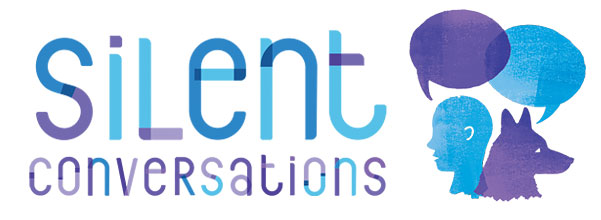
Introduction
I would like to invite you to see the silent conversations happening all around you. These conversations may have been missed, as they might not be familiar to you at the moment. If you start observing, you will start seeing them. Leaving our human expectations at the door, seeing things from a dog’s perspective and truly listening to what our dogs are saying opens a dialogue and creates a mutual relationship with our dogs. My passion is to share all that I have learnt up till now (and am still learning) about dog communication and body language. It is my dream that each and every dog guardian will be inspired to learn more about dog communication and will become fluent in dog language. The same goes for anyone who works with dogs at any professional level and has not yet learnt about dog communication. I would like dog guardians to feel empowered to make good choices for their dogs and be their dogs’ advocates because they understand what their dogs may be communicating. It is really simple – if you can see what your dog is saying, how he is feeling and what it means in any situation, you will be able to make appropriate choices and be a supportive partner.
“How is this for you?” ~ Suzanne Clothier
(One of Suzanne’s ‘Elemental Questions’ when interacting with a dog. There are a few more questions before this one and a few more after. You will have to attend a Suzanne Clothier seminar to learn more.)
Living with a different species can be difficult at times. Humans and dogs have different languages and cultures – misunderstanding happens and some things get lost in translation. These differences can put a lot of pressure on both parties. Most dogs have coped surprisingly well with the pressures put on them to fit in and behave appropriately in a human world with human expectations. Dogs also manage with a human population that does not understand their language – humans frequently get the wrong end of the stick or don’t realize when their dogs are speaking. It is amazing that so many dogs manage, but there are some that don’t. In turn, dog guardians, for safety reasons, have a lot of pressure put upon them by society. A multitude of differing information and advice is thrown at them, and this can be confusing. If their dogs are also not coping, guardians might feel the pressure even more. This can become overwhelming for those who are trying their best, but unfortunately the pressure can sometimes be passed down to the dog when all the expectations accumulate. From the get go, the focus is on training your dog in order to acclimatize her to living in a human world. In our haste to diligently make it to that stepping stone, a few crucial simple steps have been omitted and are frequently not shared with dog guardians. These simple stepping stones, like communication and understanding, make a huge difference to the relationship you share with your dog and can alter your journey. I feel there is so much information out there on positive reward training; it’s covered well by trainers skilled in this area, if you choose to investigate. So this blog will not cover any training. There are many more skills needed for both dogs and dog guardians that may not be covered in training classes or by obedience exercises. The focus will be providing an opening to the possibility of seeing different parts of the broader picture. I know this is a quote relating to horses but I feel it applies to dogs too. You could easily replace ‘horse’ with ‘dog’:
“Trying to get a horse to form a bond with us through the sole use of training, tools and technique can be a lot like trying to pull someone through a keyhole, in order to bring them into a room.” ~ Mark Rashid
A lot of pressure is passed down to the dog to “behave” rather than listening to what the dog is saying. If the dog is allowed to express himself and communicate how he is feeling, and if we listen, it makes it easier to set up a positive learning environment and allows us to be supportive to that particular dog’s needs by understanding his language and observing whether the dog is coping. In this way, you are strengthening the mutual relationship you have with your dog. Communication (the ability to connect, understand, correctly interpret and respond appropriately) has a direct impact on your relationship with your dog. The main purpose of this blog is to focus on communication and how this affects the relationship between you and your dog. I know most dog guardians might intuitively know what their dogs may be feeling/saying, but if they were asked, they might not be able to say exactly why or be sure of what to look for to back their instincts. Societal pressure, out of date advice, media/television programs, or even professionals with a bewildering variety of opinions can undermine the gut feeling of dog guardians. There is no mystery to it; we are all able to observe and learn a bit more about how dogs communicate. You just have to take the time to start observing. You will start to see dogs talking all the time! Dogs talk silently with deliberate body language. Most of this language is missed as we only start paying attention to the louder language – like barking or growling, which is used once the silent language is ignored.
Further reading:
Benefits of Learning Dog Body Language

Introduction to Dog Body Language

What are Calming Signals?

